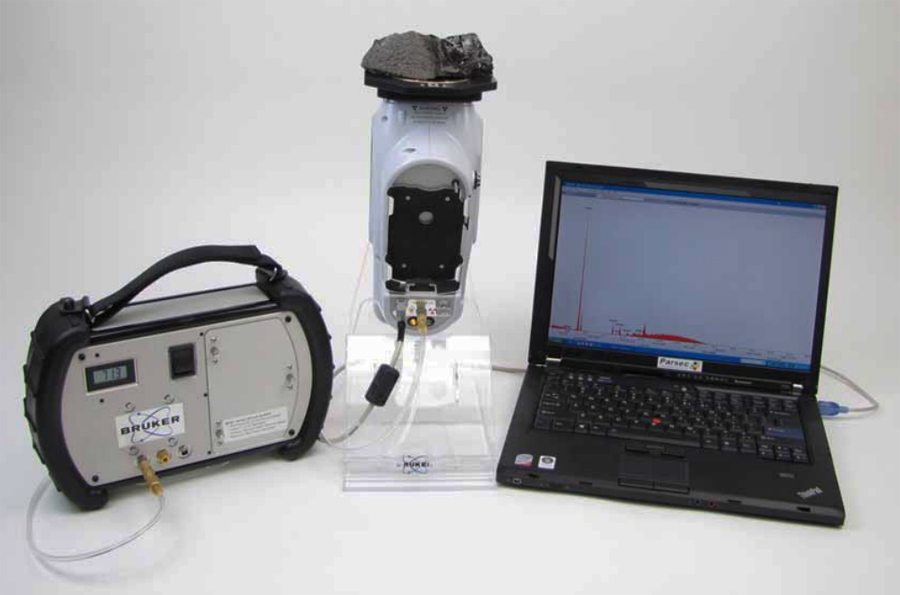Handheld XRF

XRF is an analytical technique that uses the interactions of X-rays with a material to determine its elemental composition. It is suitable for solids, liquids and powders and is widely used for non-destructive elemental analysis (metal, glass, ceramics, building materials, etc).
The WLCC has two handheld Energy dispersive X-Ray Fluoresence Spectrometers. The first is the Tracer 5g, manufactured by Bruker. It features a 1 μm graphene detector window, an integrated touchscreen display, 50kV X-ray tube, large area silicon drift detector (SDD) with a typical resolution of <140 eV at 250 Kcps, selectable spot sizes (including 3 and 8 mm collimators), and is capable of operating in air, helium, or vacuum environments. It also features an integrated VGA CCD camera with adjustable lighting with the ability to store up to 5 photos per assay. The second is an older Tracer III-SD, also manufactured by Bruker, which has a typical resolution of 145 eV at 100 Kcps. Both instruments work with Artax software which provides the ability to visualize, identify, and analyze the relative elemental content of almost any substance on earth.
- Light element analysis – Mg, Al, Si, P, S and Cl
- Adjustable Tube Voltage and Current Settings
- High sensitivity to 1mg/cm
- User selectable filters/secondary targets (used to adjust the incident X-ray beam in both energy distribution and intensity)

